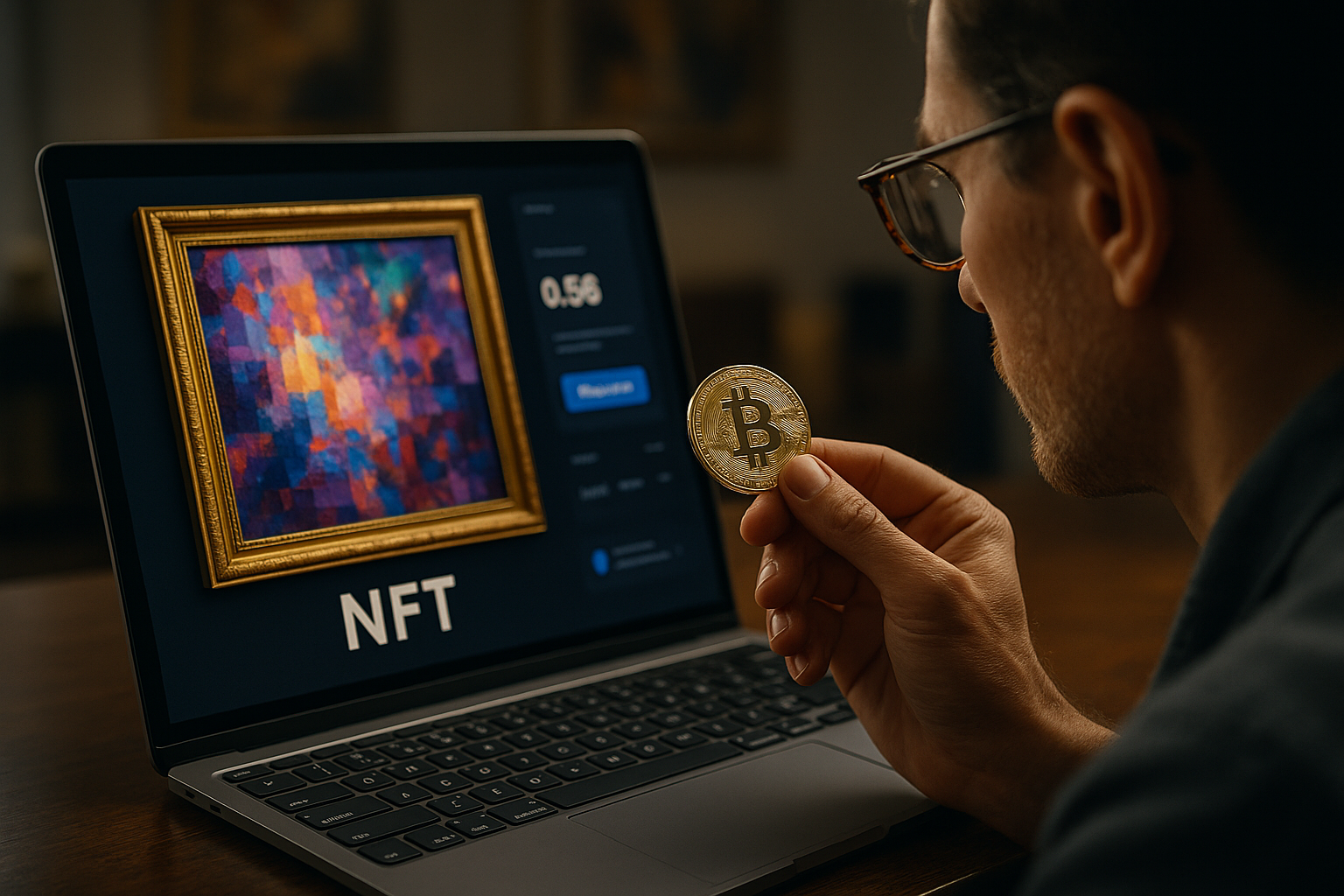Digital Resurgence: How NFTs are Shaping the Future of Art
With the advent of blockchain technology, a new paradigm in artistic expression is upon us. Non-Fungible Tokens, or NFTs, are revolutionizing the art world, challenging conventional frameworks while providing a unique platform for creators. This article delves into the origins, current developments, and ramifications of this digital art phenomenon.

Background: An Overview of NFTs and Art
Non-fungible Tokens (NFTs) are a type of digital asset that represent ownership or provenance of unique items or contents on the blockchain. In the world of art, NFTs act as a digital certificate of authenticity, allowing artists to tokenize their work. This concept began gaining traction around 2017, with notable platforms like CryptoKitties, which allowed users to buy, sell, and breed virtual cats, each represented by an NFT.
Current Developments: NFTs in Today’s Art Market
In recent months, NFT artworks have made headlines, with record-breaking sales shaking the traditional art market. The watershed moment came in March 2021 when digital artist Beeple sold an NFT artwork for a staggering $69 million at Christie’s auction house. This has spurred an NFT gold rush, with more artists and collectors exploring this new digital frontier.
Impact: The Significance of NFTs in Art
NFTs are democratizing the art market by providing a global platform where artists can directly connect with buyers. They also offer a new revenue model through smart contracts, which can be programmed to provide artists with royalties every time their work is resold. However, the environmental impact of NFTs, which rely on energy-intensive blockchain networks, is a growing concern.
Reception: The Art World’s Response to NFTs
The art world’s response to NFTs has been polarized. Some hail it as a game-changer that empowers artists and disrupts the elitist art market. Others, however, regard it as a speculative bubble that commodifies creativity and exacerbates the digital divide. Despite these differing views, there’s no denying that NFTs have sparked a profound dialogue about the nature of art in the digital age.
Looking Ahead: The Future of NFTs in Art
The future of NFTs in art is still uncertain. Will they continue to reshape the art market or will they fade away as a passing fad? Only time will tell. What’s clear, however, is that NFTs have opened up a world of possibilities for digital art, challenging us to rethink our understanding of artistic value, authenticity, and ownership.
In conclusion, the rise of NFTs marks a significant moment in the evolution of art. While they present exciting opportunities, they also raise complex issues that the art world must grapple with. As we navigate this new landscape, it’s essential to engage in critical conversations about the role of technology in art and its implications for the future.




